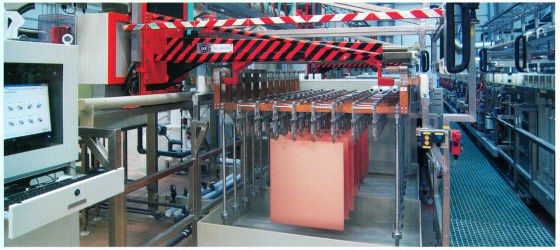According to the forecast of the Printed Circuit Board Consortium, the market of the same name will grow by almost 120% to 54.3 million square meters per year by 2027. If Russian companies adhere to their capacity development plans. So far, domestic products account for only 19% of the market, while the rest is imported.
As CNews has learned, by 2027, the volume of printed circuit boards produced in Russia will grow by almost 120%. This follows from the presentation of the "Consortium of Printed Circuit Boards" (available at CNews).
According to the consortium, in 2025, the volume of PCB production will amount to 24.7 million square meters. In 2026, it will reach 29.1 million square meters. dm, and by 2027 this figure will grow by 119% to 54.3 million square meters. dm per year. The volume was calculated taking into account the planned commissioning of production facilities in Russia.
"In the current economic situation and the desire to localize production, public and private companies are actively investing in the development of domestic production of printed circuit boards," said Olga Kozhukhovskaya, CEO of the consortium.
It is known that Russian manufacturers are also planning to increase their capacities.
As of 2025, the most powerful production of printed circuit boards is 550 dmq. "Resonit" (Zelenograd) is available per month. It is followed by the "Dubna Fab Core" with a capacity of 400 sq. dm. Per month. 200 dm sq. m . from Electroconnect (Novosibirsk), and 250 square meters each from Electropribor (Penza) and Technotech (Yoshkar-Ola). Also, many electronics manufacturers produce printed circuit boards, including Beshtau Electronics, ICL, etc.
According to the consortium, the capacity of the entire PCB market is 1.23 million square meters, of which 1 million square meters. m are imported fees, and only 230 thousand square meters are Russian. By the end of 2024, the volume of imports in money amounted to $255 million (an increase of 6% compared to $240 million in 2023). Notable importers include NEK, which accounts for 18% of imports, followed by Gran Group (16%), Resonit (8%), Fine Line and Energomera (3% each). The rest of the volume is accounted for by many small players.
Despite this, so far the majority of printed circuit boards in the Russian market (81%) are accounted for by foreign players. And only 19% are occupied by domestic manufacturers. Experts explain this by the fact that the Russian consumer needs high-precision boards, which have not yet been mass-produced in Russia.
Alexey Boyko, the author of the RUSmicro Telegram channel, told CNews that there are many problems in the Russian PCB market. He attributed to these the imbalance of production capacity and demand, technological lag and dependence on imports, as well as economic uncompetitiveness.
"If we talk about the class 6-7 printed circuit boards needed for servers and storage, they are 30-50% more expensive than Chinese ones," says Boyko. "The reasons for this are smaller series and expensive Russian loans (the high CS rate of the Central Bank)."
As explained by a representative of the electronics manufacturer Fplus, the constant increase in the complexity of electronic products, the growth in their consumption, especially equipment and infrastructure (server, network equipment, data storage systems), leads to a shift in demand for printed circuit boards of the 5th, 6th and even 7th accuracy classes with a large number of signal layers (up to 18) and large dimensions (up to 700 mm).
"The production facilities in Russia that are capable of manufacturing such printed circuit boards are clearly insufficient," he continues. — Despite the fact that, in general, about 200 different enterprises in the Russian Federation have technological equipment for the production of multilayer printed circuit boards, there are few companies capable of producing such technically complex products in large batches. These are Resonit, Krasnoe Znamya, Technotech, Electropribor, and some plants of major vendors."
The remaining companies can produce a huge number of printed circuit boards (up to 2.0 million square meters), which are technically simpler (up to 4 accuracy classes), the Fplus representative explained. Boards of this class are needed for automotive electronics, household appliances, etc. However, the need for them is significantly lower than for higher-precision boards.

